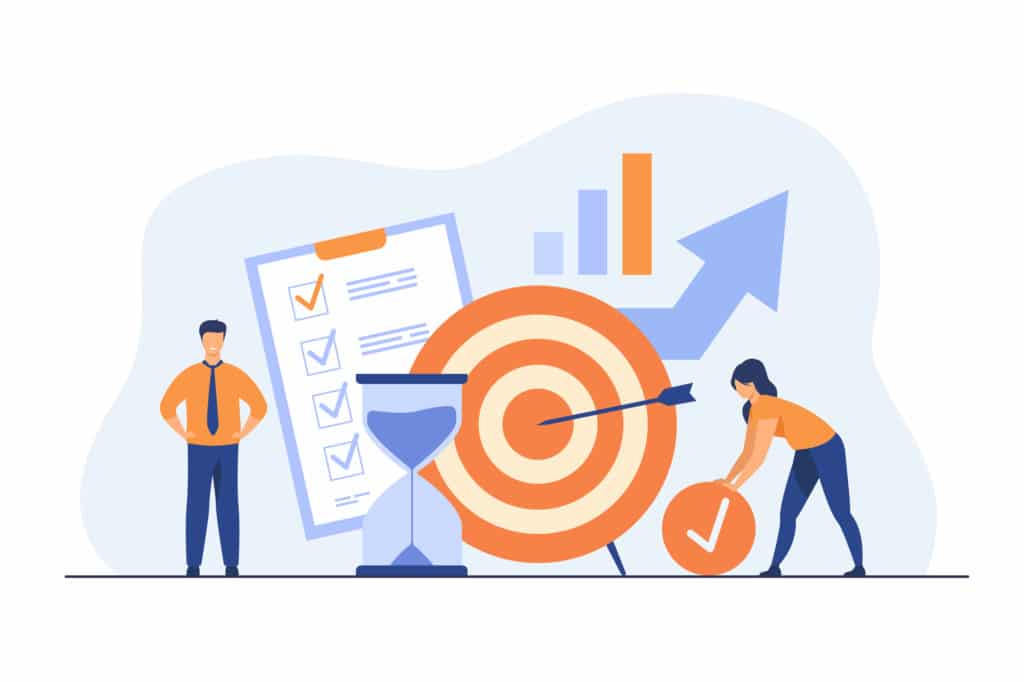5 Things I Learned From an AMS Transition

Association Management Software (AMS) is at the heart of operations for most of us. It’s where our member data lives, but it can also be so much more. Often the AMS ties into the Learning Management System (LMS), financial reporting, online communities, and more. So, when one of my clients needed an AMS and asked me to walk them through the process, I accepted the challenge.
After 13+ years of association management experience, working with the North American Invasive Species Management Association (NAISMA) on finding an AMS vendor was my first time leading this type of project. I’ll briefly describe NAISMA’s case, and then I’ll walk through 5 lessons I learned along the way.
The Organization
NAISMA was started in 1994 by a group of dedicated volunteers and has grown into an organization with a small, but dedicated, staff. Mostly grant supported, the organization was looking for a more stable stream of income in their membership dues. NAISMA members work in invasive species management–land managers, government employees, academics, and private consultants. Like many of our organizations, the members were fantastic and devoted to the organization’s success. While NAISMA has been in existence for nearly 30 years, they didn’t hire their first executive director until recently–Belle Bergner. Belle helped secure the funding and hire the staff that scaled NAISMA into the organization it is today.
I started consulting with NAISMA in the spring of 2019. I quickly realized that I could apply my association know-how and CAE training to many areas of this organization. NAISMA was still transitioning from a grassroots organization to a staffed association, so it was fun to build something. By 2021, I had helped increase membership by 300%, meaning the ways we were tracking memberships and partnerships was no longer working. Let’s dig into the member data piece.
The Problem
NAISMA had gone through a web redesign right as I came on. The site was run on WordPress and had a robust WooCommerce plugin with a subscription module to handle memberships. This process was capable of selling memberships on the site, but that’s about it. Once a member purchased the product, their most basic data (name and email) flowed into NAISMA’s Mailchimp account. While this process was preferable to processing paper applications and keeping data in Excel, it was broken in several ways:
- Member data was almost always incomplete. We had to add fields to capture a member’s organization and mailing address, and that data did not flow into Mailchimp.
- Partnerships were a big part of NAISMA’s model–local weed management groups, federal agencies, and state associations joined as partners, which gave individual member benefits to their constituents. These transactions were a nightmare to track in the system and ultimately we kept most of the information in a Google Sheet to make sense of it.
- Automation began and ended at the checkout process. It was difficult to pull lists of current or lapsed members to send communications to specific groups.
- The process required to extract real member counts for quarterly board meetings was laborious and often inaccurate.
The Solution
I could go on, but the answer was clear: NAISMA needed an AMS. Since the organization had never invested in this software before, and their membership was less than 1,000, I set out to find an out-of-the-box solution. Through a lengthy RFI process and some all staff demos, we narrowed the choices and selected a vendor. I will not name the vendor here because this is not a sponsored post, and that’s not really the point. The point is what came next: implementation. Like an island, I began implementing the new AMS. I had one colleague to support me in this, but she was also managing the online store and planning the annual conference (like I said, it was a small staff!), so her time was limited.
One of the reasons I take on new challenges is because I love to learn. I cannot overstate how much I learned during this process! It was not easy and I often worried I was letting Belle and the rest of the team down because the project stretched on past the original timeline. But, when it was finished, we had a functioning AMS that captured member data, sent automated reminders, served as our email marketing tool, and linked to an LMS.
5 Lessons Learned
-
There is no perfect AMS for all of your complex needs.
If you’ve ever looked for software, a new technology, or even a meeting app, you know this one. It’s a universal truth that frustrates tech buyers, and plagues the companies that provide the tech. Especially when it comes to something as foundational as an AMS, you will not find a solution that magically solves for every one of your problems. Your organization is unique, making your AMS needs unique. While this is great for your value proposition to members, it’s not so great for buying out-of-the-box software.
NAISMA did not have the budget for large-scale customizations, so we had to prioritize needs. One area where the AMS fell short was fundraising. It was not clear how to differentiate between memberships, partnerships and donors. The fundraising piece was very new and hadn’t brought in much revenue, so we put that need on the backburner to focus on the growing membership piece.
In my time with associations, I’ve seen needs such as committee management, award submissions and management, LMS and credentialing, online communities and more. Many of these areas are common in association management, but the way your organization does it may be unique.
When we started the RFI process, we created a list of all the functions we’d like to have and we grouped them by department. The vendor we chose was able to handle about 90% of our list. You have to be prepared to find work arounds for the other 10%, or accept that it may come at a later date as funds allow for customizations. You also must be ready to defend your process and your choices to your colleagues–because no one likes to be the department that falls within the 10% that was left out.
-
When it comes to data + tech, it always takes longer than you think it will.
I knew this one already, but there was no greater reminder than ushering in a new AMS. As someone who has worked in communications and edited web pages, built email templates and even done video editing–I know how long these things can take. One minute you have an idea to spruce up a web page, and then 4 hours later you look up from your screen and realize that little fix just took half the day!
This transition was long and difficult. One of the reasons it took so long is because the vendor we chose supplied video recordings to train staff (me) on the system. It was a way for them to cut down on costs (more on that in #3), but I underestimated how much time it would take to watch all the videos and orient to a brand new system.
I think the key here is to build in time for delays. I was ambitious with my delivery timeline and that timeline proved to be unrealistic. Between other association priorities (ex: media storm over zebra mussels in aquarium moss balls!) that ultimately stole my attention from this project, and scheduling training check-ins between my team and the vendor, we were delayed by months. As a deadline-oriented person, this was agonizing. If I got a do over, I’d schedule in buffer weeks throughout the project to account for all the unforeseen things that creep into your work as an association professional.
-
You get what you pay for; and if you didn’t pay for it, you have to do the work.
As I mentioned above, the training was mostly self-guided. I’d watch up to three hours of videos for a “module” of the training, and then I was able to schedule a recap call with our implementation expert. The team was really great and they always had answers to our questions. This type of training is different from what I’ve seen with other vendors, but those groups had much more money to invest.
Basically, the system met all our pressing needs and the support team was great. Since the price was right, there were things we didn’t get–and that was mostly support and hand holding during implementation. My advice is to identify these trade offs at the beginning. If I did it again, I’d select the same vendor, but I also should have asked how many hours of training videos I needed to watch during the implementation phase. That would have helped me correct my timeline and set realistic expectations with the executive director and the Board. Instead, when asked for updates, I was left explaining that it’s taking longer than expected because I had to watch hours of video training on forms before I was allowed to contact our implementation expert and move to the next module!
-
Your team can’t know what you don’t tell them.
I led the membership, marketing and communications team at NAISMA. Aside from my small team, the rest of the staff were trained ecologists. Each of them had worked in nonprofits or for government before, and they were true experts in their field. Yet, most hadn’t worked in an AMS before. You are bound to have people within your organization who have little to no experience with an AMS. This is where you need to be an educator and an advocate for the technology.
I know I pitched the business case well because we purchased the AMS and implemented it. But, in a staff meeting near the launch of the AMS, I found myself answering questions about the basic functions of the system. How had I not communicated all the perks of using and AMS? I had been living and breathing AMS implementation for so long, I forgot to bring the rest of the staff along with me.
So many times in staff meetings, my updates dwelled on the delays with the transition. I wish I had acknowledged the delays and then shared a feature of the system to prime the staff for all the ways in which the AMS could streamline their work. I was in the weeds and I should have peeked my head out to help guide the staff.
-
Trust the ROI.
Was this transition arduous and time consuming? Yes. But, it was still worth it. NAISMA needed a better way to collect member data and automate membership processes. The new system allowed us to process new members and partners, send automated reminders, automate a grace period and much more. My favorite feature was seeing the member dashboard upon login. I could easily see how many members we had today, who had lapsed, and I could click on those numbers and look at member profiles. It made it easy to nudge some of our biggest partners when they’d entered their grace period. The marketer in me began thinking of all sorts of ways to use the data for member communications.
Was it worth it? Yes. It was worth it because we’d calculated the ROI before we started the vendor selection process. We knew that the only way to continue scaling membership was with an AMS. Do I look forward to the next AMS transition I’m a part of? Not necessarily. But, with these lessons learned, I hope that next time is just a little bit smoother!
Tags
Related Articles
The Emergency Nurses Association Utilizes Design Thinking to Reimagine its Awards Ceremony
In a prime example of intrapreneurship, the ENA utilized design thinking to innovate within the...
Report Reveals Strategies to Overcome Membership Decline
McKinley Advisors’ Membership Reset report provides a roadmap that association leaders can use to refocus...
Member Retention: More Than Just a Number
Learn how the AANA used humor and multichannel marketing to win back lapsed members.




